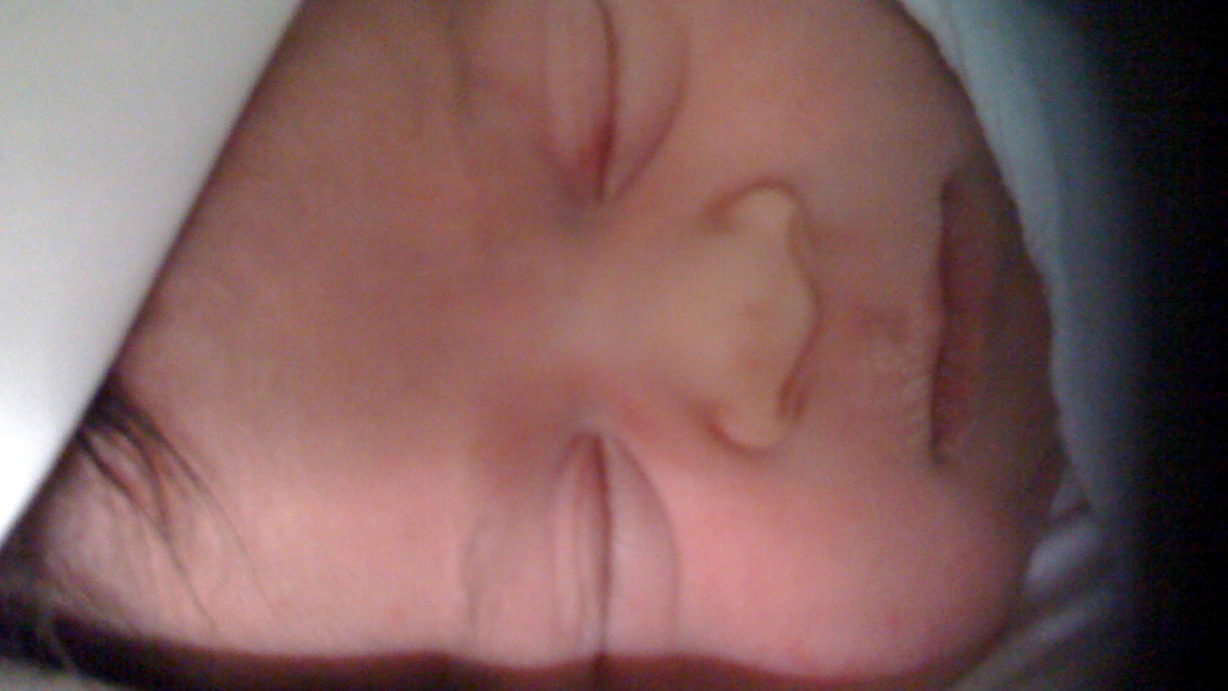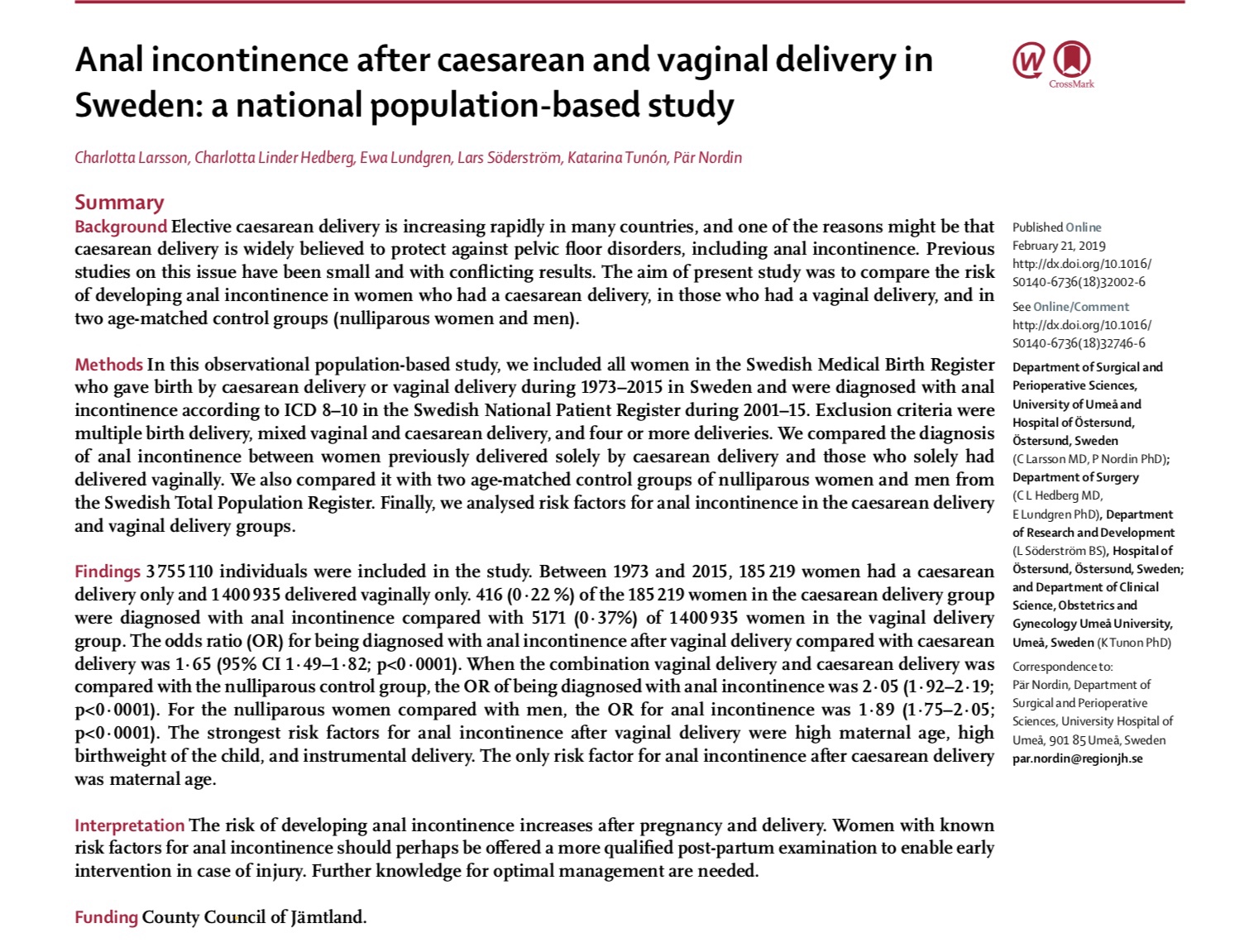
Age and parity highest risk for pelvic floor dysfunction
– 10% at age 40 and 50% by age 80 with at least one pelvic floor symptoms
– Pregnancy effect on pelvic floor: hormononal effect + weight of the fetus, upto 6 weeks postpartum can have some degree of prolapse due to pelvic floor ligamental relaxation
– upto 60% of women will have 2nd degree tear (i.e. only involves vaginal tissue and not sphincter muscle) during vaginal delivery
– 5% of women will have sphincter injury (3rd and 4th degree tear); 2.8% in private vs 6% in public (wide variation suggests room for improvement)
– – Recent increase in OASI (Obstetric Anal Sphincter Injury) likely due to the following:
– 1. increasing maternal age >35yo
– 2. increased detection
– 3. increase obesity in mother
– 4. change in birth practice (e.g. instrumental delivery, no perineal support during delivery, episiotomy type)
– 5. increase asian population , asian have narrw pelvis and short perineal body in general
– 6. WHO Guidelines recommending vaginal delivery
If one could predict an uncomplicated vaginal delivery with no damage to the sphincter or pelvic floor muscles then the decision would be easy. There are certain factors that increase the risk of sustaining a sphincter injury during birth. These include:
– Mother (1st vaginal delivery, Asian ethnicity, past OASI, perineal body less than 3cm, 40% increase in OASI if perineal body <3cm)
– Fetus (increase size of baby, malpresentation, breech)
– Birth technique( instrumental delivery, no perineal support, episiotomy)
Introduction of WHA bundle: reduced risk of OASI, e.g. controlled delivery of head, perineal massage, warm compresses
Controversial if CS will prevent pelvic floor symptoms, it is thought to reduce risk of flatal (gas) incontinence but not faecal at 12years. A recent publication in Lancet where over 3 million women in Sweden were studied showed the following (abstract attached):
– The risk of faecal incontinence in women after C section was 0.22% vs 0.37% in the vaginal delivery group. Thus, the risk is nearly double if one chose vaginal delivery.
– The risk of faecal incontinence is higher in women who have children irrespective of the the mode of delivery vs women who have never had children.

However one needs to be mindful of the risk associated with a C section: 4% increase in respiratory compromise of the child, increase risk of atopia (allergy), fetal microbiome derangement (as the baby is not exposed to mother’s feca/vaginal bacteria during birth) and obviously complications associated with the scar (wound and uterine). For further details please consult with your obstetrician.
PREDICTING POSTPARTUM FAECAL INCONTINENCE
I run a perineal clinic at boxhill hospital for women who have sustained injury to their sphincter muscles during vaginal delivery, this clinic normally involves consultation with patients about their symptoms and risk stratification. The aim of the risk assessment is to establish what is the patient’s pelvic floor ‘reserve’ and thus how safe future vaginal delivery is with respect to developement of pelvic floor symptoms.
This assessment is based on various factors: symptoms of pelvic floor dysfunction, my examination findings, anal pressures and ultrasound findings of anal sphincter integrity.
In summary, evidence suggest the following antenatal predictors of future pelvic floor dysfunction:
– active symptoms e.g. urgency for faeces, inability to control gas etc
– perineal body <3cm, for every 1cm increase 32% reduction in sphincter injury
– more than 30 degree defect in sphincter integrity on ultrasound findings, this defect could be either due to secondary breakdown of the repair or undetected sphincter injury during delivery.
– Less than 20mmHg incremental pressure during manometric testing, that is the patient is unable to generate pressure more than 20mmHg above the resting pressure during squeeze
– <40mmHg resting pressure
Patients who have any of the above risk factors will be discouraged from having future vaginal delivery as studies have shown that this cohort of patients are at highest risk of future pelvic floor dysfunction.
It is important to appreciate that even if one does not score on any of the above risk factors, it does not necessarily mean that your pelvic floor is perfect. Most of the women with faecal incontinence that I see in my practice are post-menopausal women, this is a particularly precarious time in a woman’s life and may result in unmasking of symptoms from previous obstetric trauma.
The mode of delivery for your baby is ultimately your choice and we are here to help you make that choice with more information! Please consult your colorectal surgeon and obstetrician if you have had a sphincter injury or if you have any concerns.

